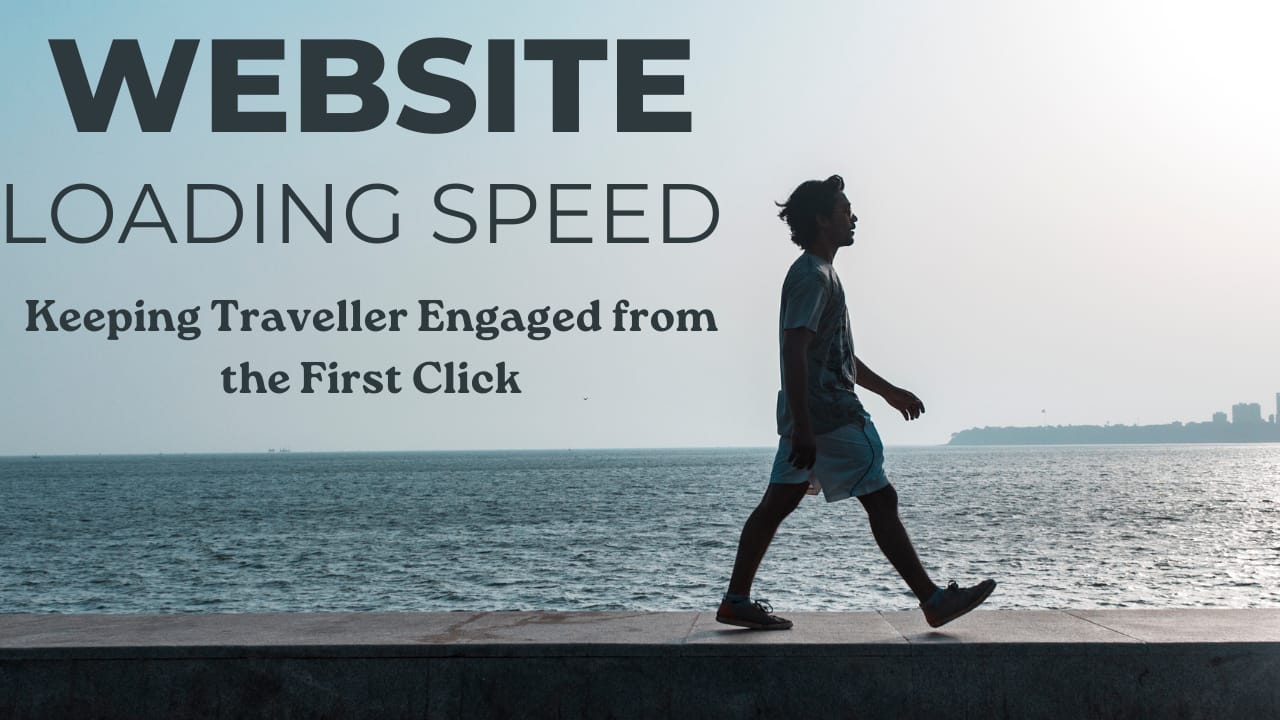
In the fast-paced digital world, a matter of seconds can determine the success or failure of a website. This axiom holds particularly true for travel websites, where capturing a potential traveler's attention from the very first click is paramount.
Do you want to know the secret weapon? Loading speed. In this blog, we delve into the critical role of website loading speed in keeping travelers engaged right from their initial interaction.
Highlights
- What is loading speed?
- Why do we need to improve the loading speed of the website?
- Optimising Loading Speed for Tour and Travel Websites.
What is loading speed?
Loading speed is the time it takes for a web page to appear on your screen after you click a link or type in a website address. When a web page loads fast, you can see everything quickly and start using the website right away. But if it loads slowly, you have to wait for everything to show up, which can be frustrating. People like fast-loading websites because they can get the information or pictures they want faster.
Why do we need to improve the loading speed of the website?
Imagine this scenario: An individual with an insatiable wanderlust stumble upon a captivating travel destination on their social media feed. Overflowing with excitement, they decide to delve deeper into the details of a tour and travel website. They click on the provided link with great expectations, but as seconds drag on, their enthusiasm begins to wane. Frustration gradually sets in, and they eventually abandon the website, choosing to explore other options. This missed opportunity could have been prevented with optimized loading speed.
Crafting a Positive First Impression:
Research indicates that users formulate opinions about a website within the blink of an eye upon landing on it. Sluggish loading times can lead to an unfavourable initial impression, eroding trust and diminishing the likelihood of users delving into the website's offerings. In the fiercely competitive tour and travel industry, a positive first impression is akin to possessing a coveted key to retaining potential travellers.
Bounce Rates and Conversion Rates:
Loading speed has a direct bearing on bounce rates—the proportion of users who navigate away from a website after perusing only a single page. Elevated bounce rates spell trouble for any website's performance, but within the context of tour and travel sites, their consequences can be particularly dire. Languid loading times contribute to higher bounce rates, thwarting conversion opportunities and potential bookings.
SEO and Enhanced Visibility:
Search engines place a premium on user experience, and loading speed stands as a pivotal factor in determining a website's search engine ranking. Tour and travel websites equipped with swift loading times are more likely to ascend in search results, attracting heightened organic traffic and potential adventurers.
Mobile Optimization:
In an era dominated by handheld devices, optimising loading speed for mobile users is non-negotiable. Travel enthusiasts frequently access websites on their smartphones to research, plan, and even finalise their travel arrangements. A leisurely-loading mobile site is nothing short of a recipe for disaster, culminating in vexed users who promptly redirect their attention to a competitor's website.
Optimising Loading Speed for Tour and Travel Websites
- Image Optimization: High-resolution images are often culprits behind slow loading times. Compressing and properly sizing images can significantly enhance loading speed without compromising visual quality.
- Content Delivery Networks (CDNs): CDNs distribute website content across multiple servers geographically. This reduces the physical distance between users and servers, leading to faster loading times, especially for users located far from the website's host server.
- Caching: Browser caching stores static resources like images, style sheets, and scripts on a user's device. This means returning visitors can load the website faster, as these resources don't need to be fetched from the server again.
- Minimizing Scripts: Excessive scripts and plugins can slow down a website. Regularly audit and remove unnecessary scripts to streamline loading speed.
- Mobile-Friendly Design: Implement a responsive design that adapts to various screen sizes. This ensures a seamless experience for users accessing your travel website from different devices.
Conclusion
In conclusion, the loading speed of a travel website is not just a technical consideration; it's a make-or-break factor in user engagement. Travelers seeking inspiration, information, and bookings demand instant gratification. A fast-loading website sets the stage for a positive user experience, bolstering trust, engagement, and ultimately, conversions. To excel in the competitive travel industry, prioritize loading speed and offer travelers the swift and seamless journey they deserve from the first click.